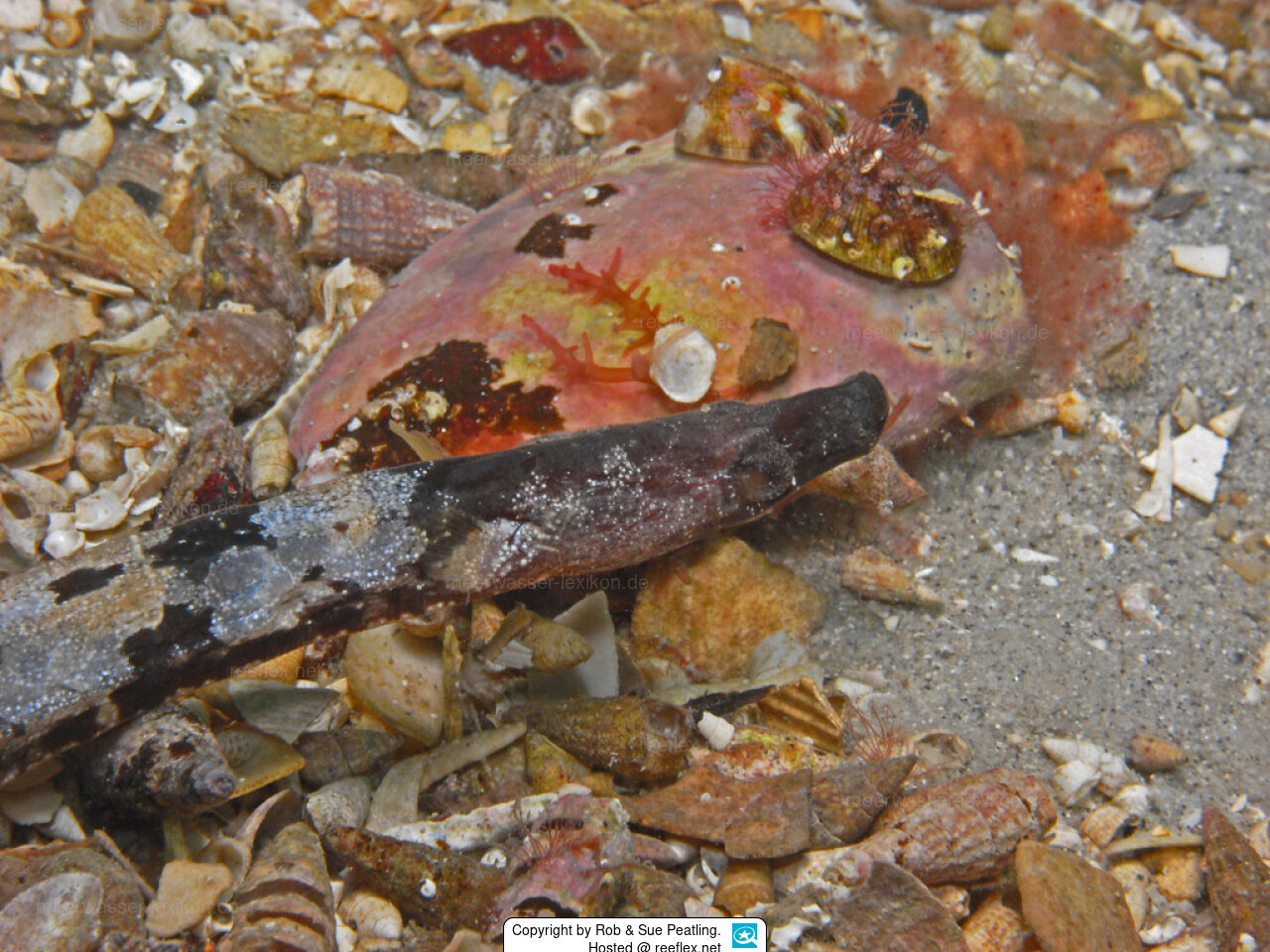Info
Stipecampus cristatus (McCulloch & Waite, 1918)
The species can be recognised by its yellowish to brownish colouration with paler bars or blotches across the back. Its endemic to Australia.
Cam be found on reefs in beds of red and brown algae.
Synonymised names:
Ichthyocampus cristatus McCulloch & Waite, 1918 · unaccepted
Feeding intake.
The fish take a long time to eat at the beginning, before the food is taken up, a close inspection is carried out. After acclimatisation, the offered frozen food is eaten without problems. It should be noted that wild-caught fish behave differently than offspring when it comes to food intake. In the case of offspring, the size of the fish purchased also plays a role in the choice of food.
The species can be recognised by its yellowish to brownish colouration with paler bars or blotches across the back. Its endemic to Australia.
Cam be found on reefs in beds of red and brown algae.
Synonymised names:
Ichthyocampus cristatus McCulloch & Waite, 1918 · unaccepted
Feeding intake.
The fish take a long time to eat at the beginning, before the food is taken up, a close inspection is carried out. After acclimatisation, the offered frozen food is eaten without problems. It should be noted that wild-caught fish behave differently than offspring when it comes to food intake. In the case of offspring, the size of the fish purchased also plays a role in the choice of food.







 Rob & Sue Peatling
Rob & Sue Peatling


